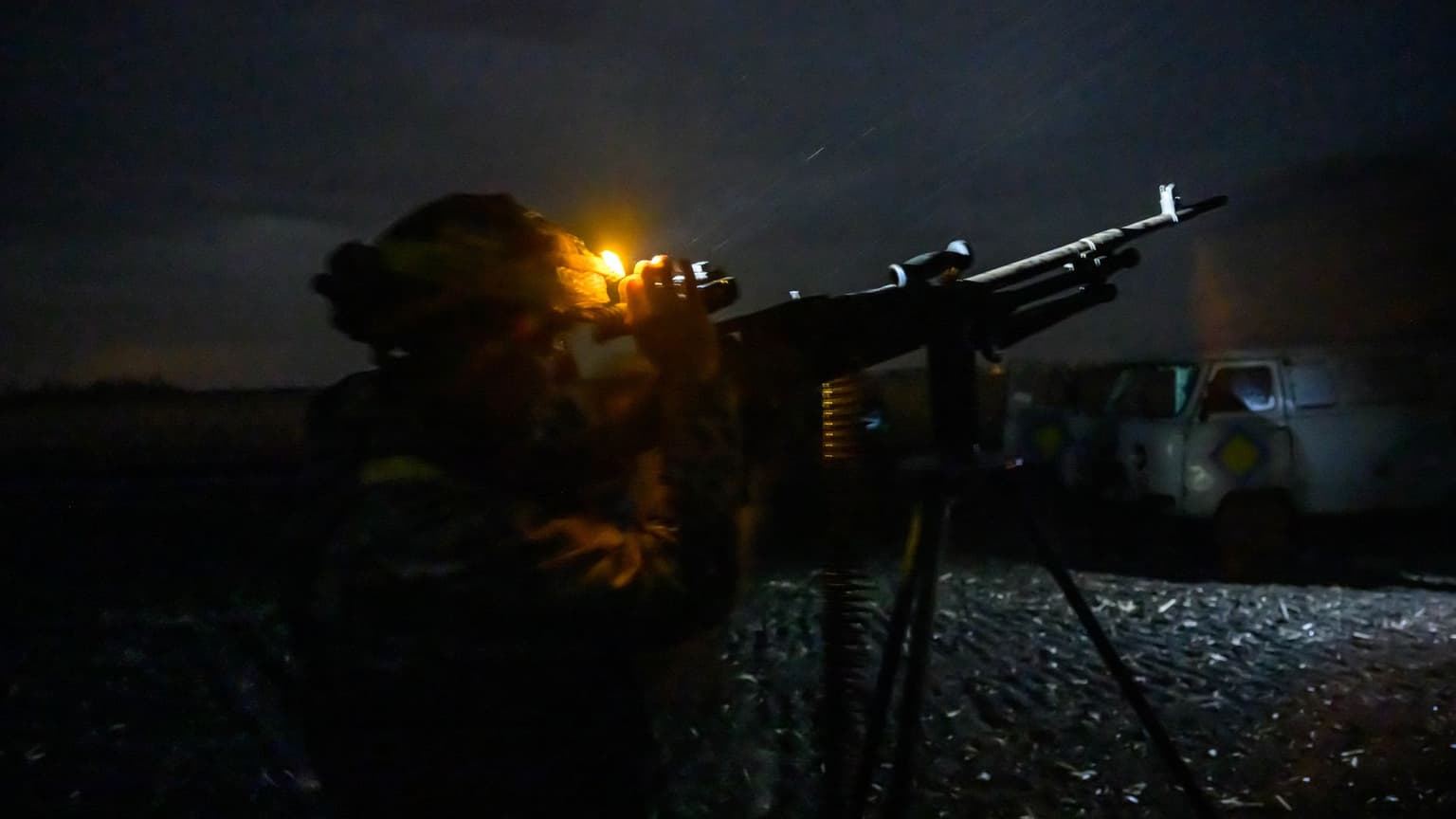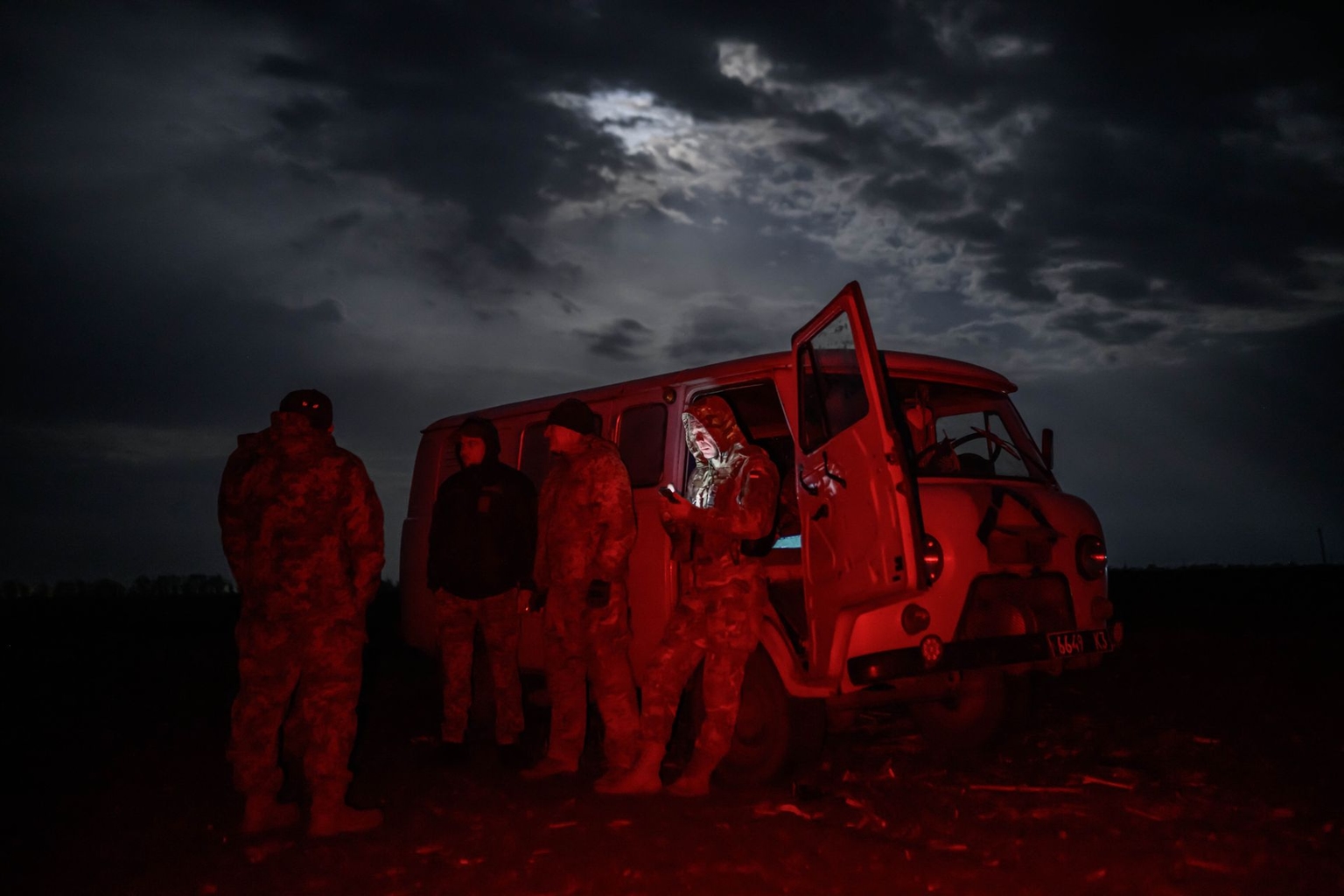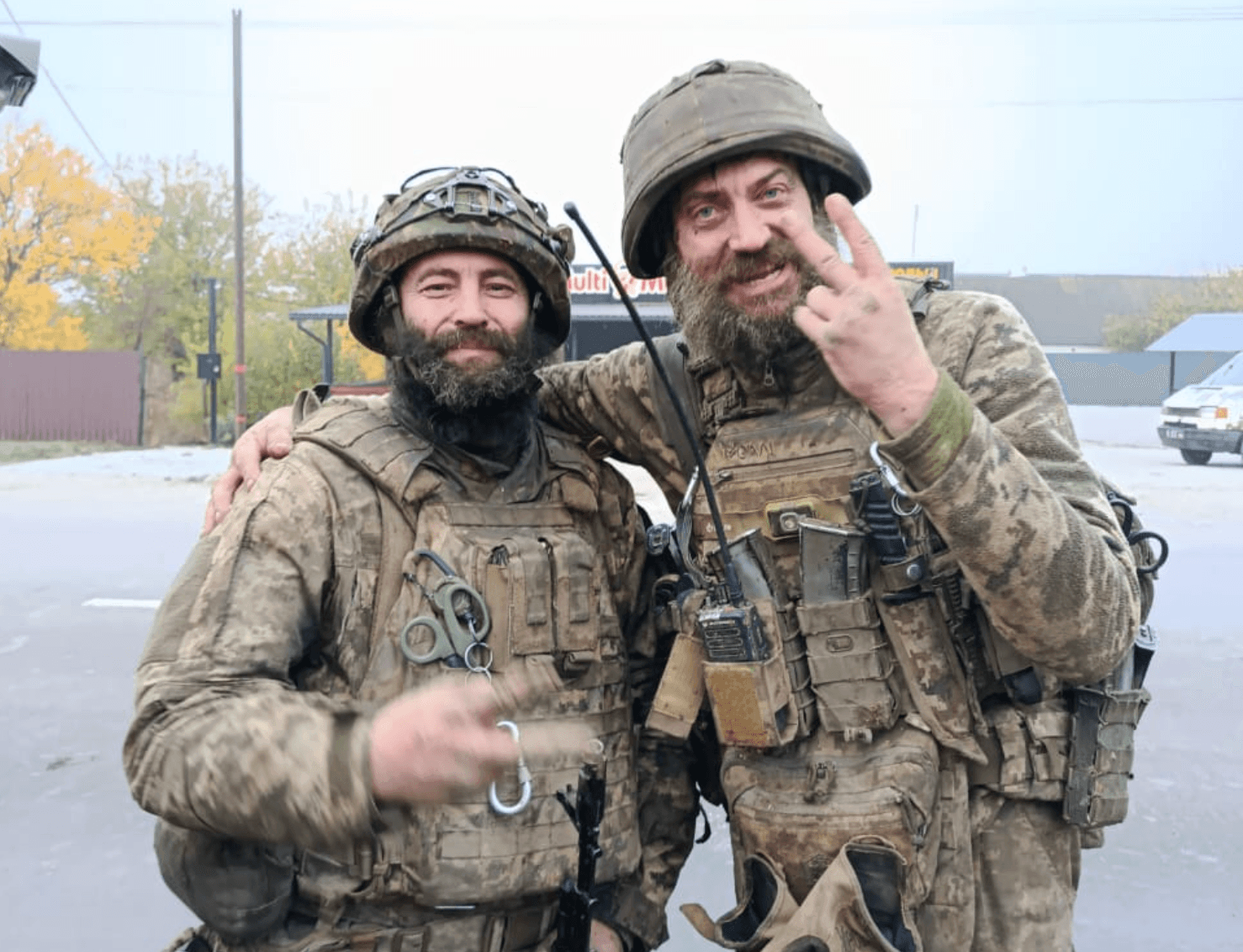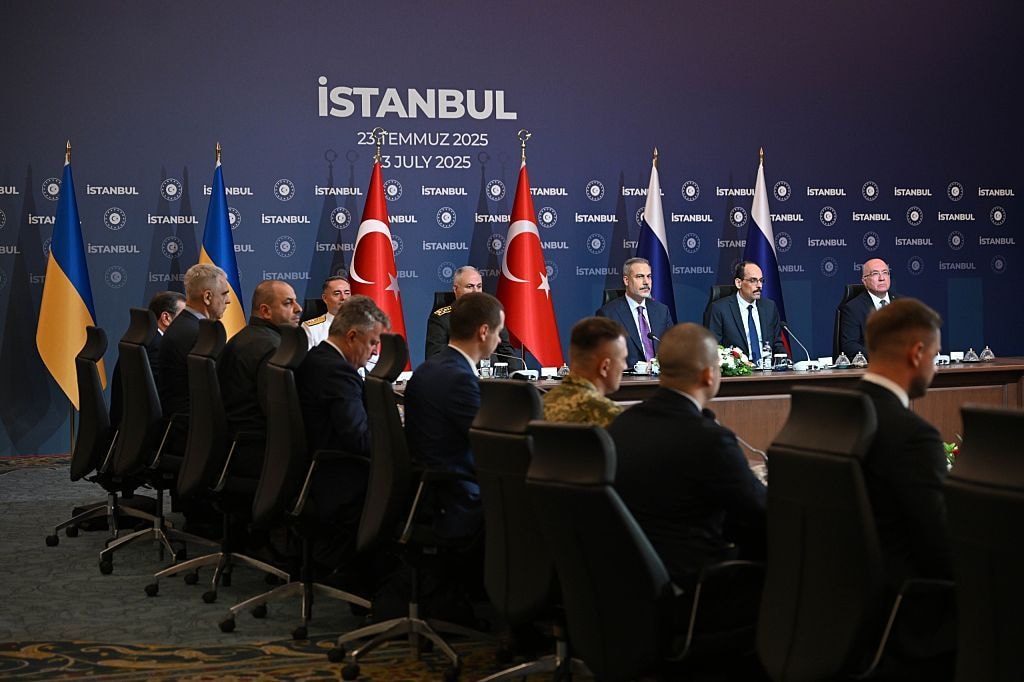
Ukraine’s autumn rains are dampening Kyiv’s air defense
Ukrainian soldier monitors for incoming Russian drones at an undisclosed location in Kharkiv Oblast, Ukraine, on Oct. 8, 2025, amid the Russian invasion. (Ed Jones / AFP via Getty Images)
Ukrainian air defenses face a new threat: rain and cloud cover cloaking Russian Shahed-type drones.
President Volodymyr Zelensky recently said on Oc.t 10 that Ukraine’s air defense had seen its effectiveness fall by “20-30%,” as a result of recent overcast weather, according to Reuters.
As a result, more and more Russian drones are getting through — hitting Ukrainian cities, and killing and injuring civilians.
On the ground, members of Ukrainian mobile air groups agree that bad weather poses a challenge. Many units use rudimentary anti-air technology — such as pickup-mounted Browning machine guns — and need to be able to spot their targets to be effective.
“A scope in the rain and snow can see up to maybe 100-200 meters,” said Oleksiy, who coordinates mobile air defense groups in Kyiv Oblast. Typically, their range of vision is, he says, about 2,000 meters. “Because of that (the weather) can impact things substantially.”
Surface-to-air systems such as the Soviet S-300 and the German Gepard self-propelled anti-aircraft gun are also widely used in Ukraine’s air defense, but Ukraine has to economize on scarce and dwindling munitions stockpiles for both systems. That goes double for U.S.-made Patriot batteries, whose missiles are on a years-long backorder.
Other local, more boutique local solutions include a new generation of interceptor drones. One of the most prominent of these is the “Sting,” a first-person-view (FPV) drone developed to chase and neutralize Shahed drones.
The Financial Times reported that the Sting had downed about 600 Shaheds and their Russian-made analogs as of early October.

“If you don’t see anything, you can’t down anything,” said Vyacheslav, one of the founders of drone maker Wild Hornets. “On all drones there’s an optical camera for visual control, on ground drones as well as air.”
“Unfortunately, Shaheds fly in any weather,” Oleksiy lamented.
Due to security concerns, both Oleksiy and Vyacheslav asked not to be identified by last name.
The problem extends even to thermal cameras, which have become a specialty of Ukraine’s drone industry in order to facilitate night bombing runs on Russian positions, as well as for defense, as they can help spot Russian drones.
“Poor weather conditions — low cloud cover, rain, snow, and fog — interfere with visual target acquisition even when using thermal imaging cameras,” Ukrainian aviation expert Anatolii Khrapchynskyi told the Kyiv Independent. “That’s why I keep emphasizing the need to deploy high-quality low-altitude radar coverage.”
Oleksiy agreed that radar coverage is the best solution, but as always, the economics pose a problem. Radar systems like Israel’s RADA ieMHRs cost $1 million, he estimated, while even Ukrainian analogs run closer to $120,000.
There are many varieties of Shahed-type drones, and some include their own visual guidance systems, but they largely follow set coordinates.
Vyacheslav’s says that more surface-to-air missiles are the best solution to the current dilemma, but those are similarly expensive relative to ammunition for machine guns. For now, Ukraine’s current defenses will have to endure until the weather clears up.









